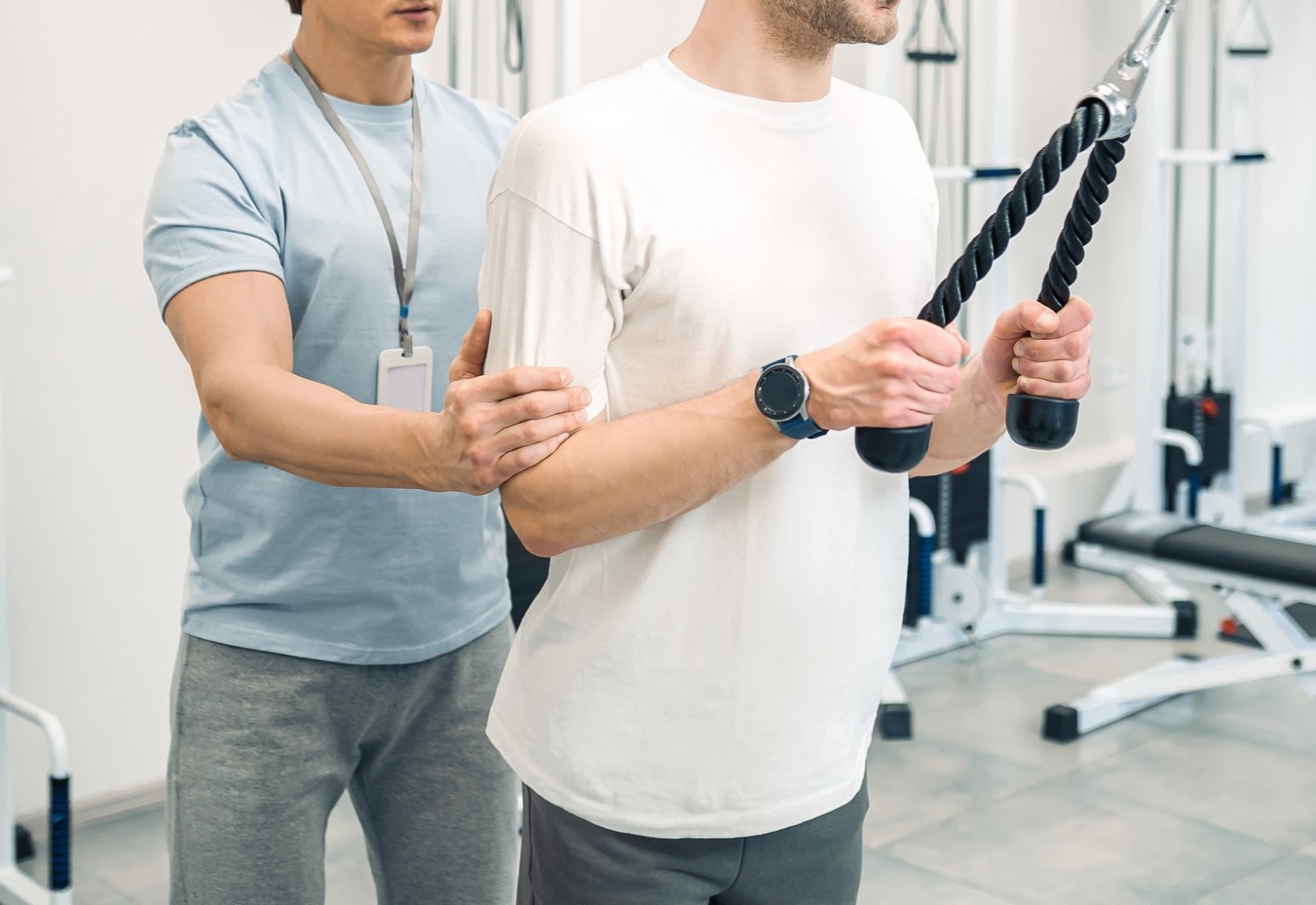Mengapa Exercise Penting Dilakukan Pasca Cedera?
Latihan setelah cedera penting untuk memperkuat otot, meningkatkan fleksibilitas, mencegah kekakuan, dan mempercepat pemulihan tanpa risiko cedera berulang.

Menjaga kondisi tubuh tetap bugar membutuhkan olahraga rutin dan konsistensi menerapkan gaya hidup sehat. Namun, tidak sedikit masyarakat berhenti olahraga karena cedera. Cedera saat olahraga memang dapat terjadi pada siapa saja, tidak hanya atlet profesional.
Jenis Cedera pada Olahraga
Berikut bentuk cedera yang sering terjadi saat berolahraga:
- Dislokasi: Pergeseran letak sendi dari tempat yang seharusnya disertai dengan kerusakan kapsul sendi dan ligamen yang mengelilinginya.
- Strain: Kerusakan pada otot atau tendon karena peregangan yang berlebihan.
- Sprain: Kerusakan ligamen karena peregangan berlebih. Cedera ini juga biasa disebut keseleo.
- Fracture/patah tulang: Terputusnya kontinuitas tulang dan atau tulang rawan, baik komplet ataupun tidak komplet.
- Muscle cramp: Kontraksi otot secara terus menerus yang tidak terkontrol akibat gangguan sirkulasi darah.
- Heat exhaustion: Kelelahan akibat sengatan cuaca panas.
Tindakan Medis pada Cedera
Jika pada tahap penanganan awal cedera (PRICE) kondisi cedera belum membaik, maka segera berkonsultasi dengan dokter spesialis kedokteran olahraga. Dokter akan memberikan obat antiinflamasi dan antinyeri; imobilisasi atau teknik pengobatan dengan dengan splint, sling, dan gips; terapi pijat, arus listrik, dan gelombang suara; serta terapi latihan untuk melatih gerakan bagian yang cedera. Jika cedera perlu ditangani dengan tindakan bedah, maka akan dilakukan oleh dokter spesialis ortopedi.
Optimalisasi pemulihan cedera olahraga ditentukan oleh keberhasilan dalam tindakan bedah dan latihan atau exercise. Exercise pasca tindakan bedah penting dilakukan untuk mencegah massa otot di area sekitar cedera menjadi lebih kecil. Idealnya, pasien sudah dapat melakukan latihan setelah 1-2 hari menunggu.
Bentuk-bentuk Latihan Fisioterapi Pemulihan Cedera Olahraga
1. Penanganan Nyeri
Pada kondisi ini, obat antinyeri merupakan opsi pertama yang dipilih untuk meringankan segala nyeri setelah operasi.
2. Terapi Modalitas Lain
Infra merah, ultrasound, laser, dan parafin juga berperan dalam proses recovery cedera olahraga. Terapi ini mengurangi nyeri dan pembengkakan. Latihan fleksibilitas diperlukan untuk meminimalisasi penurunan kisaran gerak sendi.
3. Ketahanan dan Kekuatan
Untuk memulihkan ketahanan dan kekuatan otot pasca cedera, hal yang bisa dilakukan adalah pembuatan program latihan kekuatan dan ketahanan yang disesuaikan dengan kondisi pasien.
4. Propriosepsi dan Keseimbangan
Propriosepsi adalah kemampuan tubuh manusia untuk mendeteksi gerakan dan tekanan pada jaringan lunak dan mencetuskan reaksi untuk mencegah cedera. Misalnya reaksi ketika menginjak tepi jalan untuk mencegah pergelangan kaki terkilir.
5. Latihan Fungsional
Latihan sesuai jenis atau cabang olahraga yang diikuti.
6. Penggunaan Ortotik
Penggunaan alat ortotik (alat bantu gerak tubuh) untuk mendukung fungsi muskuloskeletal dan koreksi ketidakseimbangan otot harus diperhatikan selama masa pemulihan.
7. Psikologi Cedera
Cedera lebih dari sekadar fisik. Emosi yang muncul segera setelah cedera adalah terguncang. Derajatnya berbeda, mulai dari minor hingga tampak jelas, bergantung pada beratnya cedera. Oleh karena itu, diperlukan juga recovery dan pemulihan psikologis.
FAQ Fisioterapi Cedera
Apakah Fisioterapi Bisa Menyembuhkan Cedera?
Fisioterapi dapat membantu menyembuhkan cedera dengan mempercepat pemulihan otot dan sendi, meningkatkan kekuatan, dan mencegah cedera ulang. Meski tidak selalu menyembuhkan total, fisioterapi efektif meredakan nyeri dan memulihkan fungsi tubuh.
Cedera Saat Olahraga ke Dokter Apa?
Cedera saat olahraga sebaiknya ditangani oleh dokter spesialis ortopedi atau dokter spesialis kedokteran olahraga. Mereka berkompeten menangani masalah otot, tulang, dan sendi, serta memberikan penanganan dan pemulihan yang tepat agar Anda bisa kembali beraktivitas dengan aman.
Apa Efek Samping dari Fisioterapi?
Efek samping fisioterapi bisa meliputi nyeri sementara, otot kaku, atau kelelahan setelah sesi. Ini umum terjadi karena tubuh menyesuaikan diri dengan latihan atau teknik yang baru. Efek ini biasanya ringan dan hilang dalam beberapa hari.